#east corinth
Photo



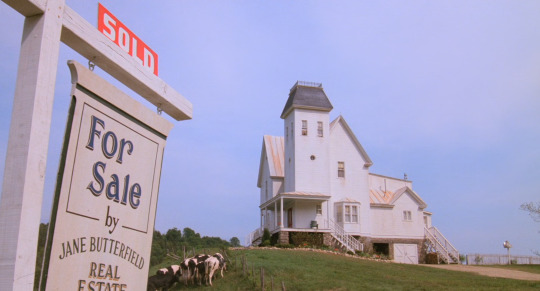
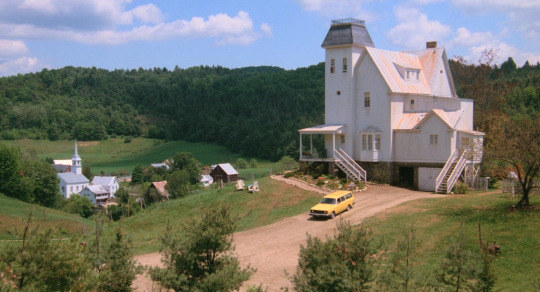

Beetle Juice
Tim Burton. 1988
House (demolished)
East Corinth, VT 05040, USA
See in map
See in imdb
#tim burton#beetle juice#house#geena davis#alec baldwin#winona ryder#east corinth#vermont#movie#cinema#film#location#google maps#street view#1988
352 notes
·
View notes
Text
youtube
Beetlejuice 2 updates I stumbled across.
#beetlejuice 2#darkly inclined#dark humor#Deetz house#maitland hardware#East Corinth#tim burton#beetlejuice#lydia deetz#creaturesfromelsewhere#musings from an elder goth#Youtube
2 notes
·
View notes
Photo

(via The most "typical" Vermont village II - Uncategorized - Photo.net)
0 notes
Text
Her destination? This spooky old treehouse!


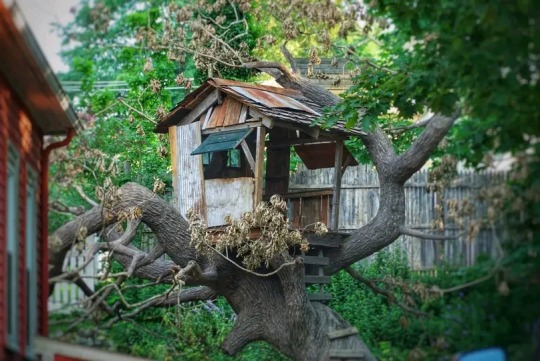
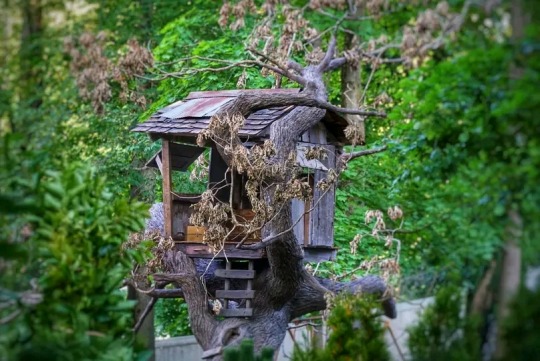
8 notes
·
View notes
Note
do you know the connection between poppies and ancient greece? all over athens and on acropolis there was alot of poppies- then they were depicted in objects at the national archeological museum aswell (crystal staff with poppy ontop). just curious!
Poppies had a lot of significance for the ancient peoples of the East Mediterranean and the Near East, such as the Sumerians, the Egyptians and the Greeks.
Poppies and poppy seeds had considerable presence in early Greek culture, namely the Mycenaean and Minoan civilizations. A lot of this significance survived to the Classical period and up to the Greco-Roman era. The poppy seeds were used in rituals, worship and medication for their psychoactive effects.
Demeter consumed poppy seeds to sleep and forget the abduction of Persephone. Apollo and Asclepius used them for medicinal purposes. Aphrodite was sometimes imagined with poppies, apparently for its seeds generating sensations of pleasure. Hypnos, Nyx and Morpheus, deities associated with sleep, night and dreams respectively, were also often imagined with poppies in their hands. The drug morphine, produced from the poppy seed, takes its name from Morpheus. The name opium, for the basic drug produced by the poppy's seeds, also comes from the Koine Greek name for it όπιον (ópion), and so does even Afyon Karahishar, the Turkish city in which one third of the global cultivation of poppy takes place. Extra fan fact: there was a double lexical borrowing and Greek opion through some modifications apparently towards ophion -> arabic afyun -> turkish afyon -> then returned back to post-Byzantine / old Modern Greek as αφιόνι (afióni). So, in Greek opium is both όπιο(ν) - ópio(n) and αφιόνι (afióni). Even though the old word όπιο is far more common, there is an interesting verb derived from αφιόνι, αφιονίζομαι (afionízome) which means "I go mad, delirious like I am under the influence of opium". Usually used when someone gets angry to the point of not making sense. You didn't ask for etymology and language lesson lol but my point was to show that evidently, even lingusitically, we see that poppies and the psychoactive, hypnotic and medicinal properties of its seeds were widely used in the Ancient Greek and then Greco-Roman world all the way until and beyond the interactions with the Arabs and the Turks, as the Greek words associated to the products of the poppy have travelled both west and east.

Carving of Demeter holding poppy seeds and wheat, Corinth, Greece photographed by Tiggrx on flickr.

Poppy field in Paros island. From DiscoverGreece.
PS 1: Since I made an etymology analysis for opium, the ancient Greek word for the poppy was μήκων (mekon) but the modern Greek one derives from the Latin papaver instead and is παπαρούνα (paparúna).
PS 2: The red poppy and the poppy that makes the drugs are not the same species but obviously all these exist in Greece so-
#greece#flowers#poppy#culture#mythology#greek culture#greek mythology#demeter#apollo#greek gods#corinth#corinthia#paros#peloponesse#cyclades#peloponissos#cycladic islands#dandelionesa#ask#Greek language
57 notes
·
View notes
Text
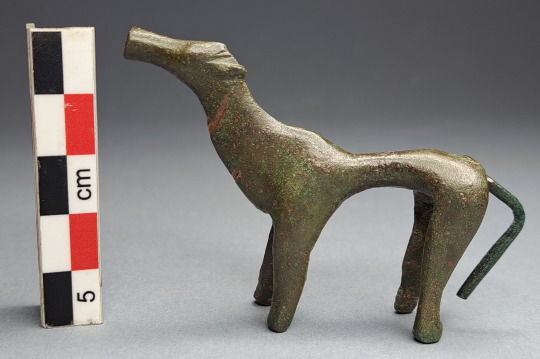
2,600-Year-Old Artifacts Found at Ancient Greek Cult Center
Around 2,600 years ago, the Greek city of Helike was destroyed when a violent earthquake and tsunami struck the region, leaving the city buried.
Archaeologists and researchers have pursued explorations of the city’s remains for decades, and recent excavations have begun uncovering more about Helike’s cult center, according to a news release from Greece’s Ministry of Culture.
Previous excavations of the site revealed an arched temple dating between 710 and 700 B.C., with a brick altar dating to 760 to 750 B.C., officials said. The latest round of excavations, from May 2 until June 23, focused on the remains of two more buildings and more religious remains.
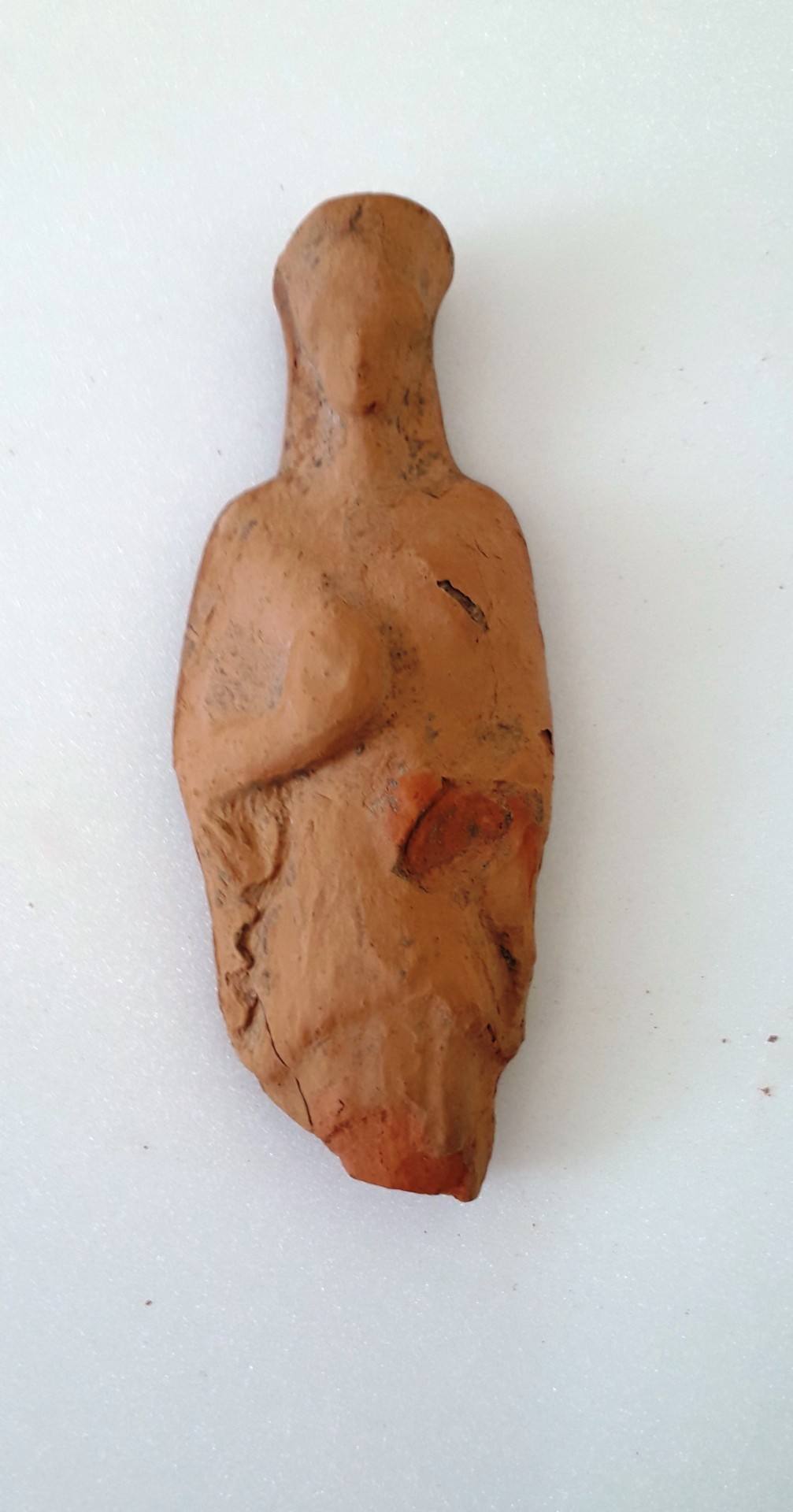
Experts said the first building they explored dates to the eighth century B.C. It had pressed soil floors and an approximately 60- to 65-foot-long wall, and it appears to have been used in three different phases.
The remains of the second building included a temple-shaped stone foundation dating to the seventh7 or sixth century B.C., officials said.
It was filled with light pottery dating to the Archaic era — which lasted from around 800 B.C. until 479 B.C., according to the World History Encyclopedia — as well as clay figurines and a bronze snake head, archaeologists said. A clay wing that belonged to a depiction of a mythological figure was also found during the excavations.
East of the two buildings, researchers unearthed a number of artifacts dating to the eighth and ninth centuries B.C. Experts said these discoveries confirm the use of the space for religious purposes as early as 850 B.C.
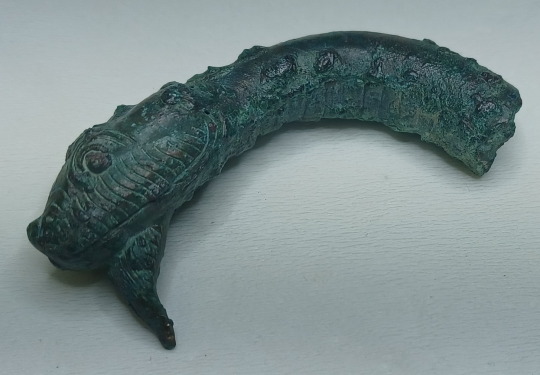
Among their finds, archaeologists identified offerings to the sanctuary’s deity — Poseidon— including clay and bronze figurines, clay chariot wheels, bronze buckles and pins, iron weapons and a rare piece of a golden necklace, according to officials. Evidence of a second deity was also found at the site.
The building remains also revealed that the area was subjected to frequent floods, experts said. This finding indicates that its residents felt a connection to the area because rather than relocating, they continued to build and rebuild the site.

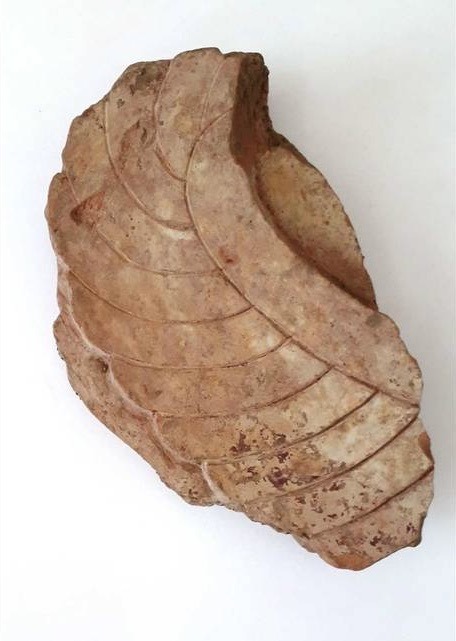
Archaeologists said they also found evidence of animal sacrifices, including goats, sheep and pigs, at the site. There was also indications of grape plant remains, pointing to the importance of wine for rituals at the sanctuary.
Helike was on the southwest shore of the Gulf of Corinth, according to the Helike Project. The Gulf of Corinth is about 66 miles northwest of Athens.
By Moira Ritter.

#2600-Year-Old Artifacts Found at Ancient Greek Cult Center#Helike’s cult center#ancient artifacts#archeology#archeolgst#history#history news#ancient history#ancient culture#ancient civilizations#ancient greece#greek history#greek art
169 notes
·
View notes
Text

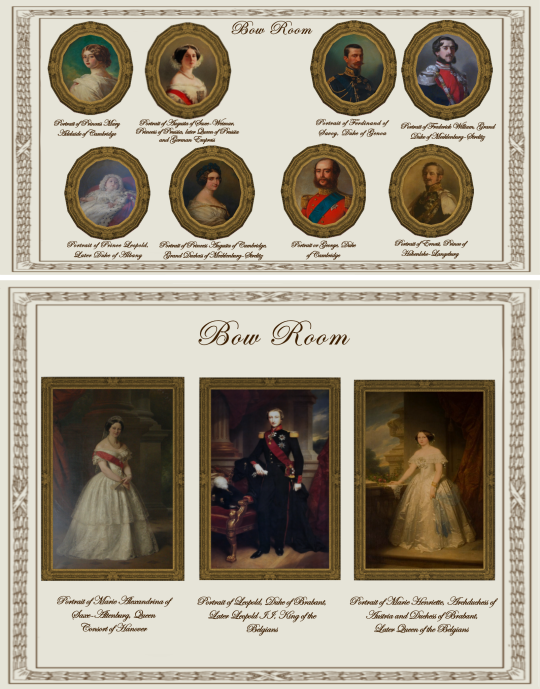
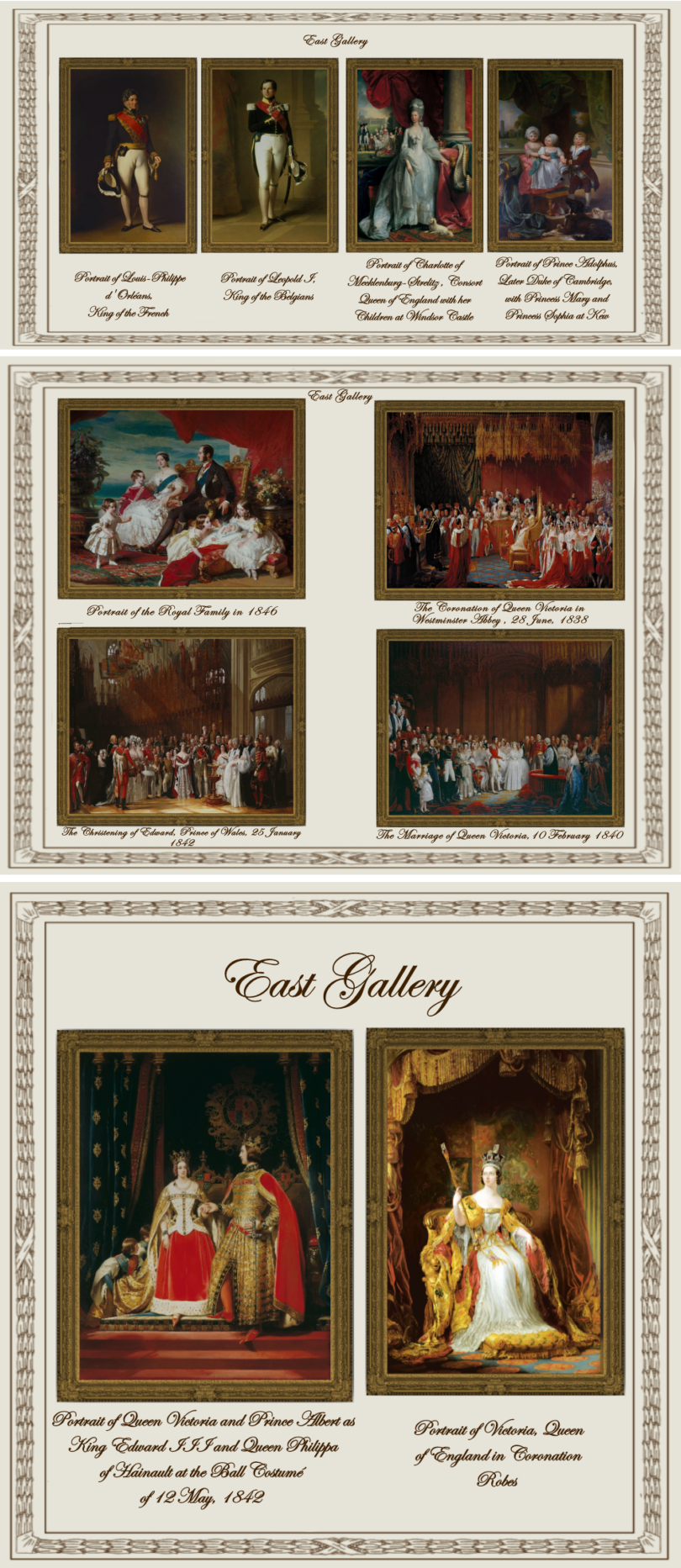
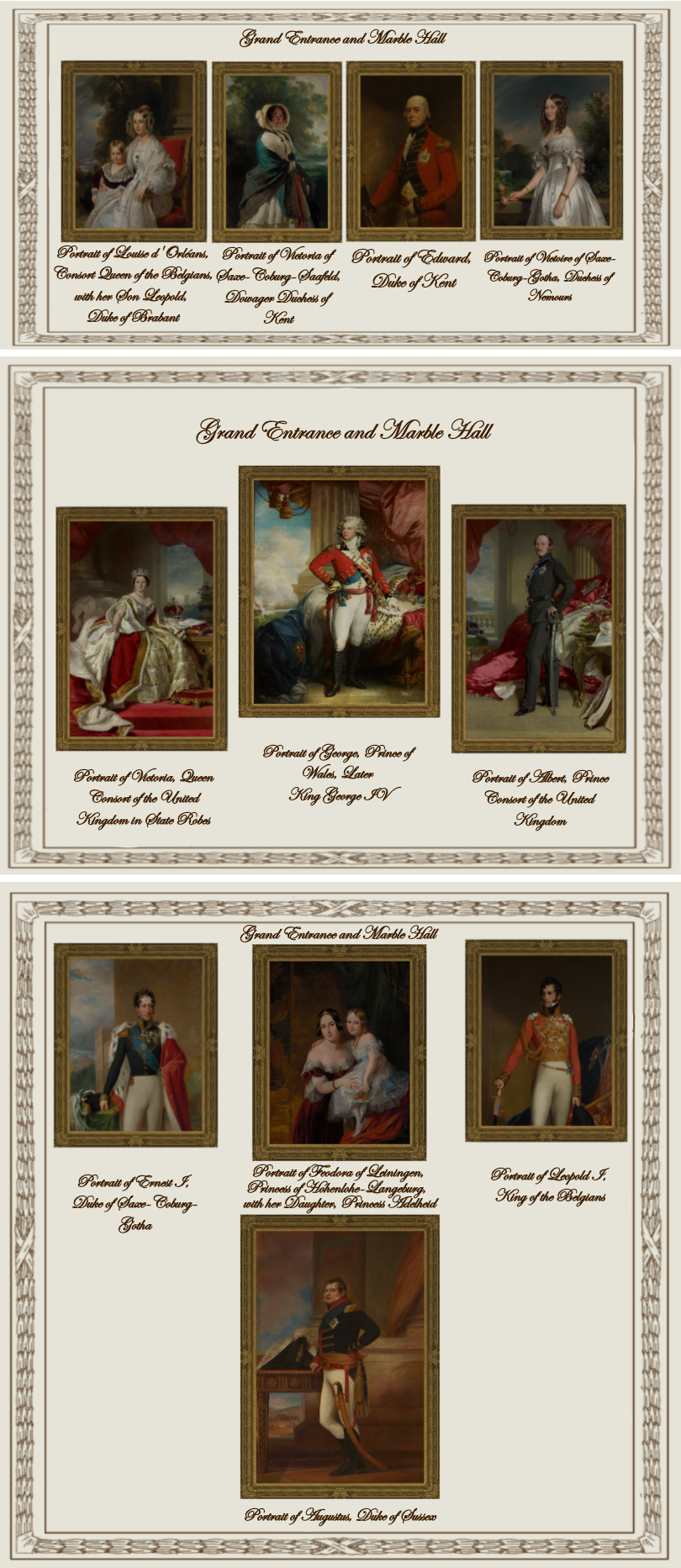

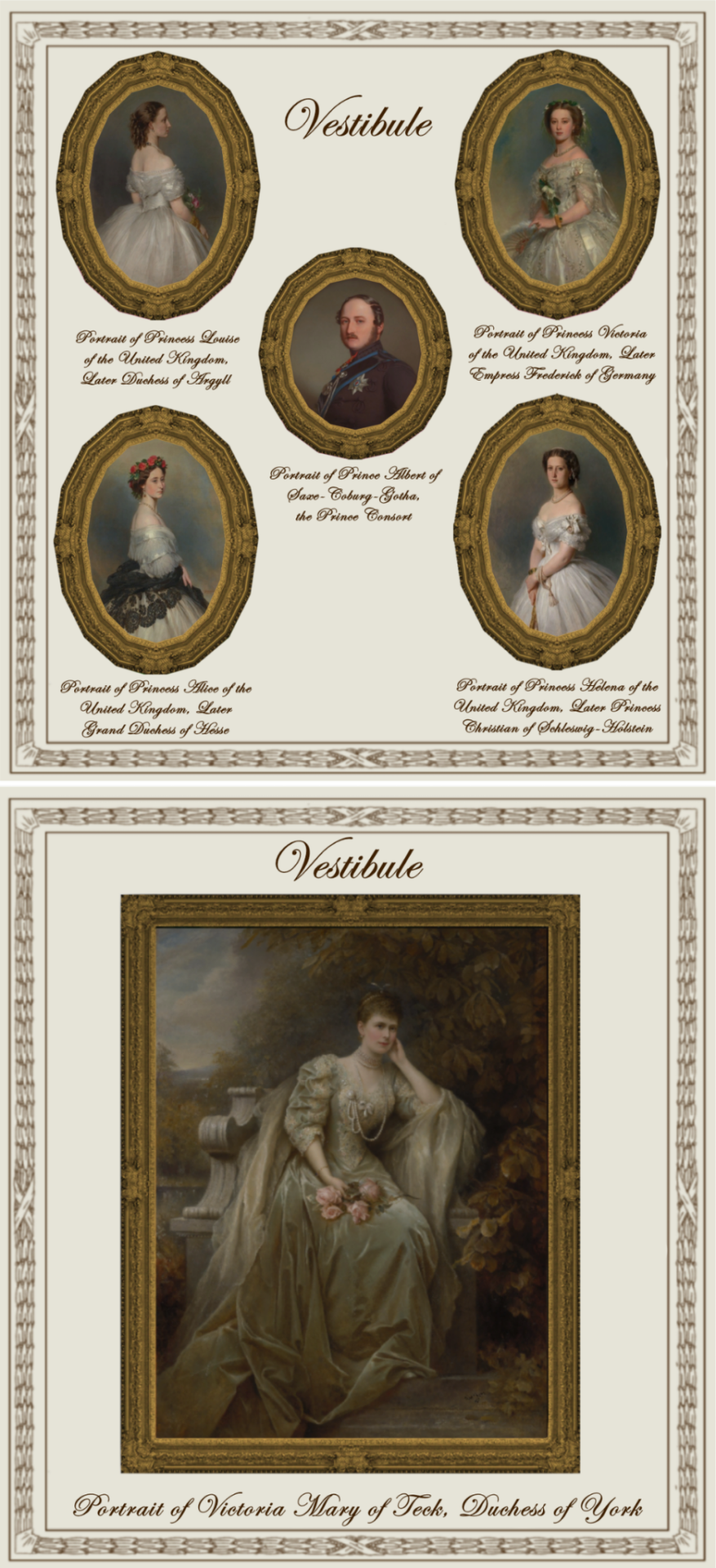


Paintings from Buckingham Palace: part II
A retexture by La Comtesse Zouboff — Original Mesh by @thejim07
Spread among 13 occupied and historic royal residences in the United Kingdom, the collection is owned by King Charles III and overseen by the Royal Collection Trust. The British monarch owns some of the collection in right of the Crown and some as a private individual. It is made up of over one million objects, including 7,000 paintings, over 150,000 works on paper, this including 30,000 watercolours and drawings, and about 450,000 photographs, as well as around 700,000 works of art, including tapestries, furniture, ceramics, textiles, carriages, weapons, armour, jewellery, clocks, musical instruments, tableware, plants, manuscripts, books, and sculptures.
Some of the buildings which house the collection, such as Hampton Court Palace, are open to the public and not lived in by the Royal Family, whilst others, such as Windsor Castle, Kensington Palace and the most remarkable of them, Buckingham Palace are both residences and open to the public.
About 3,000 objects are on loan to museums throughout the world, and many others are lent on a temporary basis to exhibitions.
-------------------------------------------------------
The second part includes paintings displayed in the Ball Supper Room, the Ballroom, the Ballroom Annexe, the Bow Room, the East Gallery, the Grand Entrance and Marble Hall, the Minister's Landing & Staircase, the Vestibule, the Chinese Dining Room and the Balcony Room.
This set contains 57 paintings and tapestries with the original frame swatches, fully recolourable. They are:
Ball Supper Room (BSR):
Portrait of King George III of the United Kingdom (Benjamin West)
Ballroom (BR):
The Story of Jason: The Battle of the Soldiers born of The Serpent's Teeth (the Gobelins)
The Story of Jason: Medea Departs for Athens after Setting Fire to Corinth (the Gobelins)
Ballroom Annexe (BAX):
The Apotheosis of Prince Octavius (Benjamin West)
Bow Room (BWR):
Portrait of Princess Mary Adelaide of Cambridge (William Corden the Younger)
Portrait of Princess Augusta of Cambridge, Grand Duchess of Mecklenburg-Strelitz (Alexander Melville)
Portrait or George, Duke of Cambridge (William Corden the Younger)
Portrait of Frederick William, Grand Duke of Mecklenburg-Strelitz (Franz Xaver Winterhalter)
Portrait of Augusta of Saxe-Weimar, Princess of Prussia, later Queen of Prussia and German Empress (Franz Xaver Winterhalter)
Portrait of Prince Leopold, Later Duke of Albany (Franz Xaver Winterhalter)
Portrait of Ernest, Prince of Hohenlohe-Langeburg (Franz Xaver Winterhalter)
Portrait of Ferdinand of Savoy, Duke of Genoa (Eliseo Sala)
Portrait of Marie Alexandrina of Saxe-Altenburg, Queen Consort of Hanover (Carl Ferdinand Sohn)
Portrait of Leopold, Duke of Brabant, Later Leopold II, King of the Belgians (Nicaise de Keyser)
Portrait of Marie Henriette, Archduchess of Austria and Duchess of Brabant, Later Queen of the Belgians (Nicaise de Keyser)
East Gallery (EG):
Portrait of Leopold I, King of the Belgians (Franz Xaver Winterhalter)
Portrait of Victoria, Queen of England in Coronation Robes (Sir George Hayter)
Portrait of Louis-Philippe d'Orléans, King of the French (Franz Xaver Winterhalter)
Portrait of Charlotte of Mecklenburg-Strelitz, Consort Queen of England with her Children at Windsor Castle (Benjamin West)
Portrait of Prince Adolphus, later Duke of Cambridge, With Princess Mary and Princess Sophia at Kew (Benjamin West)
The Coronation of Queen Victoria in Westminster Abbey, 28 June, 1838. (Sir George Hayter)
The Christening of Edward, Prince of Wales 25 January, 1842 (Sir George Hayter)
The Marriage of Queen Victoria, 10 February, 1840 (Sir George Hayter)
Portrait of the Royal Family in 1846 (Franz Xaver Winterhalter)
Portrait of Queen Victoria and Prince Albert as King Edward III and Queen Philippa of Hainault at the Ball Costumé of 12 May, 1842 (Sir Edwin Landseer)
Grand Entrance and Marble Hall (GEMH):
Portrait of Edward, Duke of Kent (John Hoppner)
Portrait of Ernest I, Duke of Saxe-Coburg-Gotha (George Dawe)
Portrait of Victoria of Saxe-Coburg-Saafeld, Dowager Duchess of Kent (Franz Xaver Winterhalter)
Portrait of Albert, Prince Consort of the United Kingdom (Franz Xaver Winterhalter)
Portrait of Victoria, Queen Consort of the United Kingdom in State Robes (Franz Xaver Winterhalter)
Portrait of Louise d'Orléans, Consort Queen of the Belgians, with her Son Leopold, Duke of Brabant (Franz Xaver Winterhalter)
Portrait of Feodora of Leiningen, Princess of Hohenlohe-Langeburg, with her Daughter, Princess Adelheid (Sir George Hayter)
Portrait of George, Prince of Wales, Later King George IV (Mather Byles Brown)
Portrait of Victoire of Saxe-Coburg-Gotha, Duchess of Nemours (Franz Xaver Winterhalter)
Portrait of Augustus, Duke of Sussex (Domenico Pellegrini)
Portrait of Leopold I, King of the Belgians (William Corden the Younger)
Minister's Landing and Staircase (MLS):
Portrait of George, Prince of Wales in Garther Robes (John Hoppner)
The Loves of the Gods: The Rape of Europa (the Gobelins)
The Loves of the Gods: The Rape of Proserpine (The Gobelins)
Vestibule (VL):
Portrait of Prince Albert of Saxe-Coburg-Gotha, the Prince Consort (Unknown Artist from the German School)
Portrait of Princess Alice of the United Kingdom, Later Grand Duchess of Hesse (Franz Xaver Winterhalter)
Portrait of Princess Helena of the United Kingdom, Later Princess Christian of Schleswig-Holstein (Franz Xaver Winterhalter)
Portrait of Princess Louise of the United Kingdom, Later Duchess of Argyll (Franz Xaver Winterhalter)
Portrait of Princess Victoria of the United Kingdom, Later Empress Frederick of Germany (Franz Xaver Winterhalter)
Portrait of Victoria Mary of Teck, Duchess of York (Edward Hughes)
Chinese Dining Room or Pavilion Breakfast Room(CDR):
Set of Four Painted Chinoiserie Wall panels I (Robert Jones)
Set of Four Painted Chinoiserie Wall panels II (Robert Jones)
Set of Four Painted Chinoiserie Wall panels III (Robert Jones)
Set of Four Painted Chinoiserie Wall panels IV (Robert Jones)
Balcony Room or Centre Room (BR):
Chinoiserie Painted Panel I (Robert Jones)
Chinoiserie Painted Panel II (Robert Jones)
Chinoiserie Painted Panel III (Robert Jones)
Chinoiserie Painted Panel IV (Robert Jones)
EXTRAS! (E):
I decided to add the rest of the tapestries from the story of Jason (wich hangs in the Grand Reception Room at Windsor Castle) and (with Jim's permission) added the original mesh for paintings number 2,3,4 & 5 from the Vestibule (seen here and here) wich was never published. These items are:
The Story of Jason: Jason Pledges his Faith to Medea (the Gobelins)
The Story of Jason: Jason Marries Glauce, Daughter of Creon, King of Thebes (the Gobelins)
The Story of Jason: The Capture of the Golden Fleece (the Gobelins)
The Story of Jason: The Poisoning of Glauce and Creon by Medea's Magic Robe (the Gobelins)
Sea Melodies (Herbert James Draper) (made by TheJim07)
-------------------------------------------------------
Found under decor > paintings for:
500§ (BWR: 1,2,3,4,5,6, & 8 |VL: 1)
570§ (VL: 2,3,4 & 5 |E: 5)
1850§ (GEMH: 1 & 3)
2090§ (GEMH: 2,6,7, 9 & 11)
3560§ (GEMH: 4,5 & 10 |BSR: 1 |EG: 1,2,3,4 & 5 |MLS: 1 |BAX: 1)
3900§ (CDR: 1,2,3 & 4 |BR: 1,2,3 & 4 |EG: 10 |VL: 6 |GEMH: 8)
4470§ (MLS: 2 |E: 1)
6520§ (BR 1 & 2| MLS: 3 |EG: 6,7,8 & 9 |BR: 1 & 2 |E: 2,3 & 4)
Retextured from:
"Saint Mary Magdalene" (BWR: 1,2,3,4,5,6, & 8 |VL: 1) found here.
"Sea Melodies" (VL: 2,3,4 & 5 |E: 5)
"The virgin of the Rosary" (GEMH: 1 & 3) found here.
"Length Portrait of Mrs.D" (GEMH: 4,5 & 10 |BSR: 1 |EG: 1,2,3,4 & 5 |MLS: 1 |BAX: 1) found here
"Portrait of Maria Theresa of Austria and her Son, le Grand Dauphin" (CDR: 1,2,3 & 4 |BR: 1,2,3 & 4 |EG: 10 |VL: 6 |GEMH: 8) found here
"Sacrifice to Jupiter" (MLS: 2 |E: 1) found here
"Vulcan's Forge" (BR 1 & 2| MLS: 3 |EG: 6,7,8 & 9 |BR: 1 & 2 |E: 2,3 & 4) found here
(you can just search for "Buckingham Palace" using the catalog search mod to find the entire set much easier!)
Disclaimer!
Some paintings in the previews look blurry but in the game they're very high definition, it's just because I had to add multiple preview pictures in one picture to be able to upload them all! Also sizes shown in previews are not accurate to the objects' actual sizes in most cases.

Drive
(Sims3pack | Package)
(Useful tags below)
@joojconverts @ts3history @ts3historicalccfinds @deniisu-sims @katsujiiccfinds @gifappels-stuff
-------------------------------------------------------
#the sims 3#ts3#sims 3#s3cc#sims 3 cc#sims 3 download#sims 3 decor#edwardian#victorian#regency#georgian#buckingham#buckingham palace#wall decor#sims 3 free cc#large pack#this was exhausting
52 notes
·
View notes
Text
AITA for remarrying to improve my family's station?
so i and a group of buddies went on a quest to take this sick golden fleece from this barbarian king in the east, and i convinced his daughter, m, to help us by promising to marry her. she only did some little things, but it ended up with us getting married, having two kids, and stopping off in corinth. well, while we were there i met this other girl, and we really hit it off, and it turns out she's the king's daughter (crazy right??). and i thought, what a great opportunity, because if i marry into the royal family, i'll be able to provide for my other kids better- and to be honest, this other girl just gets me, y'know? i didn't tell my wife because i figured she wouldn't understand, her culture's real different and she has a bad temper. anyway, she found out when it got announced, and now she's saying i'm abandoning my family and threatening me and my new family, but i think i'm doing us a favour by giving my kids royal brothers, and making us rich- plus, she wouldn't even get to live in greece if it wasn't for me convincing her to come with me. so, aita for just wanting to help?
edit: yes, she is getting exiled, but only because she wouldn't stop threatening my new gf, she can't blame me for that!
298 notes
·
View notes
Note
If you're still taking Spotify requests: E/R for which ever song is your favorite that ISNT a repeat from last year. (Or Taylor Swift. My coworker has been over playing Midnights in the office and I'm so sick of it atm.)
Oh man, this was a hard song to pick, because I love so many songs on this playlist (obviously, or they wouldn't be in my top 100!). In the end, I went with the song that I have loved the longest, the one that I used to ask my father to play whenever he drove, like, 4-year-old me anywhere because the album this was on was one of the cassette tapes he had in his car.
Well, it was this album or Enya, and sadly Orinoco Flow didn't make my top 100 for some reason.
87. "The Ballad of Billy the Kid" by Billy Joel
It's a Western AU. Because why the hell not at this point.
The night was quiet and peaceful, its stillness broken only by the gentle crackle of the dying fire and the ubiquitous chirp of crickets, but Enjolras couldn’t seem to enjoy it, his own ears still ringing with the sounds of chaos from earlier.
As a general rule, Enjolras didn’t like robbing trains. Too high a possibility of innocent people being hurt or recognizing one of Les Amis, defeating the purpose of how they handled their robberies, and besides, word of mouth spread faster when robbing banks.
But when Combeferre got reliable word that the Corinthe, headed from back east out to the west coast, was carrying a stash of money belonging to none other than F. H. Tholomyès himself, one of the wealthiest and most exploitative robber barons the West had ever seen, Enjolras knew that not even he could pass up this opportunity.
Which was how Les Amis had found themselves that morning perched along the train tracks, guns and horses at the ready. As they waited for the train to round the bend in the tracks, Enjolras could not help but share a few words, knowing they would never have another opportunity like this one. “Gentlemen,” he started, sweeping his hat off his head to catch their attention, “where are we going?”
To his right, crouched behind a rocky outcropping, Courfeyrac muttered something that sounded suspiciously like, “For Christ’s sake,” but Enjolras ignored him, instead glancing around at their compatriots.
Joly sheepishly raised a hand. “Are we going to the train?” he asked, barely managing to hide his smile as Grantaire and Bossuet sniggered on either side.
Enjolras’s eyes narrowed, and Joly’s smile disappeared. “Yes,” Enjolras said, with a bite of impatience. “We’re going to the train just as we are going to the future. And what we do here today is in service of all people. Gentlemen, we are no mere robbers—”
“We do not steal for riches,” Bahorel recited in what was clearly meant to be an undertone but carried a little too well.
“We do not steal for glory,” Feuilly added, a grin twitching at the corners of his mouth as Prouvaire chimed in, with the cadence of an orator, “Thievery, I hate you, but I make use of you—”
“—For by stealing this money, so too do we steal our future from those who would keep it from us,” Bahorel, Feuilly and Prouvaire finished in unison, and Enjolras glowered at them.
Grantaire cleared his throat. “Maybe if you didn’t use the same speech at the start of every robbery—” he started, but Enjolras ignored him, barreling stubbornly onward.
“We are advancing the unity of man,” he said through gritted teeth. “The common man out from under the thumb of the rich, that is the goal. And whatever happens here today, through our failure or through our success, we are creating an alternative to those who think there’s no other way to live.”
He glanced at Combeferre on his left, who also looked a little like he was trying not to smile, and Enjolras scowled. He was saved from saying anything by the train finally rounding the tracks, and instead jammed his hat on his head before he raised his voice to shout, “Courage, and onward!”
From there, things had devolved into the usual controlled chaos that was the undercurrent of every robbery they had ever done, all leading to this moment camped out by the fire, their afternoon’s takings – even more than Enjolras had hoped – in a series of nondescript bags to be tied to a horse’s saddle.
As much as Enjolras disliked robbing trains, he disliked the aftermath of a robbery even more. He could never find a way to calm himself after the excitement, always ready to move onto the next. He reckoned it was part of what made him so successful, even if it meant always feeling a little like an outsider as his friends traded jokes and stories around the campfire as he brooded on their next plan.
Still, there was nothing else for it, and with a sigh, he sat upright, grabbing his hat from on top of his saddle and placing it on his head before standing. He bent to pick up the saddle, carrying it over to his horse, Mabeuf, who was drowsily grazing where he was picketed. “Sorry for the early morning, boy,” he murmured, rubbing the horse’s neck before lifting the saddle onto his back.
A similar movement caught the corner of his eye and he immediately turned, his hand automatically falling to the pistol at his hip. He relaxed when he saw it was just Grantaire tending to his own horse.
The relaxation was short-lived, seeing as how Grantaire had never been an early riser and had managed to drink enough whiskey to drown a lesser man, and Enjolras’s eyes narrowed. “What’re you doing?”
Grantaire didn’t even glance over at him, adjusting the saddle with a practiced eye. “What’s it look like I’m doing?”
Enjolras scowled. “Looks like you’re packing up.”
Now Grantaire did look over at him, a small smile creasing his face. “I always knew you were more than a pretty face.”
Enjolras crossed his arms in front of his chest. “Why are you packing up?” he asked, ignoring Mabeuf nudging his shoulder in search of an apple or sugar cube.
Grantaire shrugged. “Because I’m going.”
“Going where?” Enjolras ground out. No one managed to irritate him quite like Grantaire did.
Grantaire shrugged again, squinting out at the horizon where the first hint of light was just beginning to break. “Well, now, that’s a good question,” he said easily. “Not sure yet.”
Enjolras sighed. “You know you can’t come with me.”
“I do,” Grantaire said.
Enjolras scowled. “You know why we do it like this.”
“Hasn’t changed.”
“Grantaire.” They’d had this argument so many times before that Enjolras really only needed to say Grantaire’s name in that tone for them to both know exactly how this would play out, just as it had every time before. It was as familiar to them as the sun rising over the plains, and almost as comforting in a strange way, as if a mission wasn’t complete without its familiar cadence.
Which was why Enjolras kept his tone calm but firm in the explanation he’d given a hundred times before. “I’m the one who has to go,” he told Grantaire. “We do the job, I split off with the money and distribute it to where it needs to go. That way, I draw all the attention to myself, and let you all get away. No one ever suspects you. You can’t be implicated.”
They hadn’t always done it this way, but after the first posse got together to track them down, Enjolras had insisted on the change, had insisted that everyone else cover their faces so that the only one anyone ever got a good look at was him.
There was a reason Les Amis wasn’t well known throughout the West, and it wasn’t because they weren’t damn good at what they did – it’s because to every sheriff from the Mississippi to the Rio Grande, they were known as Apollo the Kid and his Gang.
He didn’t need to remind Grantaire of that, though – Grantaire knew. Even in the dim light of the dying fire, Enjolras could see a muscle working in Grantaire’s cheek. “That is indeed the plan.”
Enjolras suddenly found he couldn’t quite meet Grantaire’s eye, and so busied himself with Mabeuf’s bridle. “Which is why you can’t come with me,” he said, his voice rough.
“You already said that,” Grantaire said, matching his tone. “I ain’t deaf.”
“Could’ve fooled me,” Enjolras shot back.
Grantaire scowled at him. “Listen, the job’s done, right? So there’s no need for me to stay. Way I see it, I’m free to go.”
Enjolras jerked a shrug. “I guess.”
“You guess?” Grantaire repeated. “And here I thought freedom was the entire point of what we were doing here.” He paused before adding pointedly, “Isn’t it?”
Enjolras rolled his eyes. “Of course, but that’s not—”
Grantaire gave him a look. “Ain’t you the one who keeps saying that the working people need to unite because the only thing we have to lose is our reins?”
“Chains, but—”
“Then let a man pack his horse in peace,” Grantaire finished.
Enjolras scowled. “Fine, if you’ll answer me one question.”
“What’s that?” Grantaire asked, not looking over at him.
“Why’d you suddenly decide to pack up now when I started to?”
Something that might’ve been a smile twitched at the corners of Grantaire’s mouth. “Coincidence.”
Enjolras’s eyes narrowed. “Helluva coincidence.”
“Sure is.”
Still, despite himself, despite everything, Enjolras had to admit that packing up seemed to go faster with Grantaire at his side. Or at the very least, it seemed just a little bit less lonely.
When they were both packed – and the money they’d stolen carefully stashed in Enjolras’s saddlebags – Enjolras pulled himself onto his horse, glancing over at Grantaire. “You heading out?”
“Yessir,” Grantaire said, patting his horse’s neck as he added in an attempt at casual, “Which way are you headed?”
Enjolras jerked his chin toward the horizon. “West.”
Grantaire nodded slowly. “Well, whaddya know,” he said. “So am I.”
Enjolras just shook his head. “Coincidence?” he asked wryly.
Grantaire half-smiled. “Sure is.”
Just as the packing was less lonely with Grantaire by his side, so was the ride. It was early enough that neither man worried too much about anyone else being on the road, though both kept a weather eye out, just in case.
But the ride in comfortable silence could only last for so long, and eventually, Enjolras reined his horse to a stop, Grantaire stopped as well. Enjolras nodded to the fork in the road up ahead. “This is where we part ways,” he said, a note of warning in his voice.
Grantaire’s expression was unreadable. “If you say so.”
“I do,” Enjolras said with conviction. He hesitated before adding, “Thank you for coming all this way with me—”
“It was nothing,” Grantaire interrupted. “I was headed this way anyway.”
Enjolras managed a small smile. “Coincidence.”
Grantaire smiled as well. “Well, something like that, anyway.”
Enjolras nodded, something sharpening in his expression. “Just like it’s coincidence how you always seem to be headed my way after every robbery,” he said lightly.
Grantaire’s smile faded, and he shrugged. “Ain’t the world a remarkable place,” he said noncommittally.
“I suppose it is.” Enjolras glanced over at him. “Where are you headed now?”
Grantaire shrugged again. “Oh, here, there, and around,” he said, purposefully vague, but Enjolras didn’t miss the way his hand twitched toward his gun in its holster. “Got some business to keep an eye on.”
Enjolras frowned. “You know I don’t need you to protect me,” he said bluntly, tired of playing this little game every single time.
To his surprise, Grantaire barked a laugh before running a hand across his mouth. “Enjolras, you don’t need me for a damn thing.”
“I don’t know that I’d go quite that far,” Enjolras said before he could stop himself, and he quickly looked away, feeling the back of his neck burn despite being protected by his hat. “In any case, I’ll, uh, I’ll see you at the rendezvous.”
Grantaire nodded. “Yessir.” He kneed his horse forward, ostensibly toward the fork Enjolras wasn’t taking, then paused, turning back to face him. “Oh, and Enjolras?”
“Yeah?”
Grantaire raised his chin just slightly. “Anytime you want it to be something other than a coincidence, all you have to do is say the word.”
Enjolras’s throat felt tight. “I know,” he said, his voice low.
For a moment, it looked like Grantaire might say something more, but instead he just touched the brim of his hat before kneeing his horse forward again. Enjolras watched him go before starting forward once again, alone.
#exr#enjolras x grantaire#enjoltaire#enjolras#grantaire#les amis#fanfiction#western au#cowboy au#robber au#developing relationship#it's about the yearning y'all#spotify wrapped meme#ask#answered#impetusofadream
33 notes
·
View notes
Video
East Corinth Vermont 2021 by james lucier
#foliage#vermont#eastcorinth#fall#church#flickr#Photography#Autumn#Autumn Aesthetic#Autumncore#Fall Aesthetic#Autumn Cozy#Fall Blog#New England#landscape
14 notes
·
View notes
Text
A thought occurred to me, via the musical, that the various high schools JD attended could be playfully expanded on for the AU as a larger 80’s nod.
In order, in the schools Jason attended before he met Dan and Veronica.
Ridgemont High (Fast Times At Ridgemont High)
Niles East High (Sixteen Candles)
Shermer High School (The Breakfast Club and Weird Science)
Glenbrook North High (Ferris Bueller’s Day Off)
San Pedro High School (Some Kind of Wonderful)
Hawkins High (Stranger Things)
The high school in Lucas (Incidentally Winona Ryder debuted in this picture.)
Tucson High Magnet School (Can’t Buy Me Love)
An unspecified high school in East Corinth, Vermont (Beetlejuice) (JD has an encounter with the ghost with the most. Had JD stuck around a day longer, he would’ve reunited with Dan sooner as Dan was on vacation in the same town with his cousins, and he too encountered Beetlejuice during his trip. BJ figures out quickly Dan and JD knew each other, due to the boys referencing each other, but says nothing directly to Dan about it at the time. The boys and Veronica summon Beetlejuice in Sherwood later on in an offbeat adventure that requires a supernatural touch to deal with. Beetlejuice affectionately calls Veronica “babes” to her annoyance as she reminds him of Lydia.)
Hubert Humphrey High (Pump Up The Volume) (A technical cheat since it’s a 90’s film, but Christian Slater is the star also, and you know JD would be a huge fan of Hard Harry. Had some friendly encounters with Mark, but they never became proper friends.)
Sherwood High (Heathers)
Hawkins remains the most significant part of JD’s backstory, though when asked about his other schools or just reminiscing to himself, he’ll mention some something that happened in the movies that he happened to notice or overhear. When at his apartment, JD will sometimes be listening to Hard Harry’s channel trying to drown out his own problems, at least up until Mark was arrested.
#blueike productions#blueike#heathers 1989#heathers au#heathers#heathers the musical#heathers movie#jd headcanons#jd heathers#jason dean headcanon#heathers jason dean#80’s movies#80s
10 notes
·
View notes
Photo





Beetle Juice
Tim Burton. 1988
Hardware Store
657 Village Rd, East Corinth, VT 05040, USA
See in map
See in imdb
#tim burton#beetle juice#alec baldwin#east corinth#vermont#united states#hardware store#barber shop#movie#cinema#film#location#google maps#street view#1988
69 notes
·
View notes
Text
THIS DAY IN GAY HISTORY
based on: The White Crane Institute's 'Gay Wisdom', Gay Birthdays, Gay For Today, Famous GLBT, glbt-Gay Encylopedia, Today in Gay History, Wikipedia, and more …


Iolaus and Heracles mosaic
1000+ BC – Iolaus was a Theban divine hero, son of Iphicles and Automedusa. He was famed for being Heracles's nephew and for helping with some of his Labors, and also for being one of the Argonauts. Through his daughter Leipephilene he was considered to have fathered the mythic and historic line of the kings of Corinth.
As a son of Iphicles, Iolaus was a nephew of Heracles. He often acted as Heracles' charioteer and companion. He was popularly regarded as Heracles's lover, and the shrine to him in Thebes was a place where male couples worshiped and made vows.

Iolaus (L) and Heracles (R) united by Eros
The Theban gymnasium was also named after him, and the Iolaeia, an athletic festival consisting of gymnastic and equestrian events, was held yearly in Thebes in his honor. The victors at the Iolaea were crowned with garlands of myrtle.
Iolaus provided essential help to Heracles in his battle against the Hydra, his second labor. Seeing that Heracles was being overwhelmed by the multi-headed monster (the Lernaean Hydra), who grew two heads in place of each one cut off, Iolaus sprang to help, cauterizing each neck as Heracles beheaded it.


1618 – Sir Walter Raleigh was executed on this date (b.1552). The famed English writer, poet, courtier and explorer was responsible for establishing the second English colony in the New World (after Newfoundland was established by Sir Humphrey Gilbert nearly one year previously, August 5 1583), on June 4, 1584, at Roanoke Island in present-day North Carolina.
The question for us here is this: Was Sir Walter Raleigh Christopher Marlowe's lover? Anything is possible, especially when so little is known about both. For many years, this provocative possibility has been suggested, even though it is based entirely on speculation. Marlowe wrote a poem titled, "The Passionate Shepherd to His Love," which begins with the charming invitation "Come live with me and be my love." A twin poem, "The Nymph's Reply to The Shepherd," appeared shortly thereafter, and there is little doubt that it was written by Raleigh out of love for Marlowe.


The Swiss Guard in traditional uniform.
1954 – Alois Estermann (d.1998) was a senior officer of the Swiss Guard who was murdered in his apartment in the Vatican City.
Estermann was born in Gunzwil, in the Canton of Lucerne. In 1998 he was appointed as Commander of the Pontifical Swiss Guard.
According to official Vatican statements, Estermann and his Venezuelan wife, Gladys Meza Romero, were killed in May 1998 by a young Swiss Guard Cédric Tornay, who later committed suicide. Estermann, formerly acting commander of the Swiss Guard, had been confirmed in his position the same day. Tornay had earlier been reprimanded for breaches of discipline and had been passed over for a medal routinely awarded to Guards after three years of service.
The British journalist, John Follain, undertook extensive interviews with key witnesses to the murders to inform his book, City of Secrets: The Truth behind the murders at the Vatican (2006). Follain dismisses speculation that Estermann, his wife, and Tornay were murdered by an external fourth party or that Estermann was a spy for the former East German government.
Follain's research indicated that Cédric Tornay did indeed kill his commander, and his commander's wife before turning the gun on himself. Tornay found the running of the Swiss Guard archaic, and resented the dominance of the Swiss German majority contingent. Tornay turned to Alois Estermann for affection, and enjoyed a short homosexual affair. Their relationship deteriorated into acrimony as Tornay realised that Estermann had betrayed him with another guard. Estermann's close links to the Opus Dei movement, and his final refusal to award the benemeriti medal for 3-years service led to further frustration and Tornay's ultimate decision to kill Estermann.
Pope John Paul II personally celebrated Estermann's Funeral Mass in the church of Saints Martin and Sebastian.

1931 – Clyde Hicks of North Carolina was stationed in Hawaii, arrested on sodomy charges and sentenced to six years in prison. He was transferred to Alcatraz where he was put into solitary confinement for passing a note to another man. He was released in 1935.

1989 – Under the headline "Peek-a-Boo," New York's Outweek magazine publishes a list of 66 celebrities and public figures who are allegedly gay but closeted. The article marks the beginning of controversial "outing" by some gay activists.


5 notes
·
View notes
Text
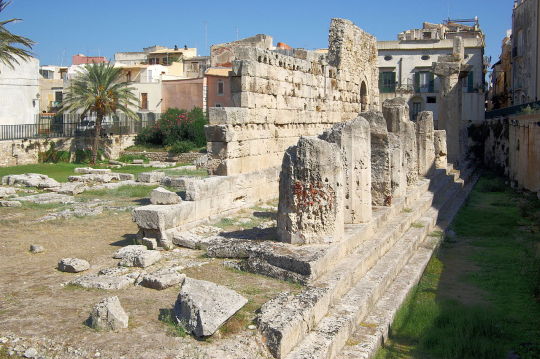
Photo credit: Berthold Werner
Temple of Apollo in Ortigia, Syracuse (Sicily)
If you ever happen to be in the center of Ancient Ortigia, which lays in the oldest part of the city of Syracuse in modern Sicily, don’t miss out on visiting the ruins of the temple to Apollo, built there in the beginning of the 6th century BC.
At the time, Sicily was under Greek rule, having been colonized for about two centuries. Thus, the temple has a significant influence brought in by Greek sculptors - in fact, it is the oldest Doric temple in Sicily. This type of temples, called peripteral temple where the columns surround the entire structure, has quickly become common across Eastern parts of Greece, too. It’s possible that the inspiration roots in the temple of Apollo in Corinth.
This monumental stone structure has gained quite the history over the time of its existence: it was used as a Hellenistic church, a Byzantine church, an Islamic mosque (there are Arabic inscriptions on the walls), Norman, and even Spanish church. It happened over the very long period of the Sicilian land being conquered and colonized by various powers. The consistent changes as to how the building was built caused noticeable damage to the structure. It’s only in the beginning of the 20th century that the temple was finally cleared and opened to view.

Plan of the temple.
The temple itself measures 55.36 x 21.47 meters at the stylobate, with an arrangement of 6 x 17 columns of rather squat proportions. The front is hexastyle, meaning that the portico has six columns, and there’s a continuous collonade surrounding the pronaos and the cell, which was divided into three naves with three slimmer collonades inside. There is some evidence that the roof of the temple was wooden, though it’s hard to reconstruct. The architrave, part of the roof resting immediately atop the columns, was also wooden, which was a common part of Sicilian architecture of the time. It is possible that inner columns of the temple were meant to hold up the roof. This, as some researchers admit, would be quite a difficult structural feat to complete.
The back of the cell of the temple had a closed compartment called adyton or adytum, which was used to hold the cultic image of the Deity and wasn’t supposed to be entered outside of religious services. This is a very typical Siceliot detail that temples across Eastern Greece have quickly acquired.

There were in total 46 columns made out of stone and it is highly likely they were transported to Sicily by sea. The enterprise must have been exceptional to the builders themselves as there is an inscription on the back of the temple celebrating the event. On the East side of the temple, near the steps, one can read a 8 m long inscription in Attic Greek that reads, transcribed with difficulty: Kleomenes son of Knidieidas made the temple to Apollo, and Epicles made the colonnades, beautifully done.
It is possible that the temple was also dedicated to Diana, as Cicero notes. This wasn’t an uncommon happening: the Twins were often venerated together, and it was a done thing that the temple of Apollo belonged to Diana, and vice versa.

Right now, not much of the temple is preserved. A section of epistyle on the Southern side alongside two columns is preserved, and so is a part of the wall of the cell. The Western side is still in restoration. The building was primarily made out of blocks of sandstone, which might explain why it hasn’t lasted for as long as some other structures. We can also still see some of the inner decor preserved in the regional museum Paolo Orsi:


The temple of Apollo of Syracuse was likely built in close vicinity to the temple dedicated to His son Asclepius. This is hinted at by the findings near Piazza Pancali, where two statues were excavated - one for Igea, Divinity of hygiene and medicine, and one invoking a doctor, possibly attributed to Asclepius.
🏺 🏺 🏺
#apollo#ancient sicily#ancient greece#ancient architecture#sicilian history#temple of apollo#HISTORIA 📔
28 notes
·
View notes
Text
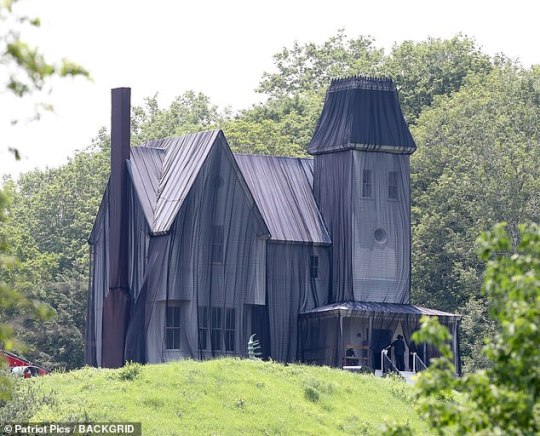
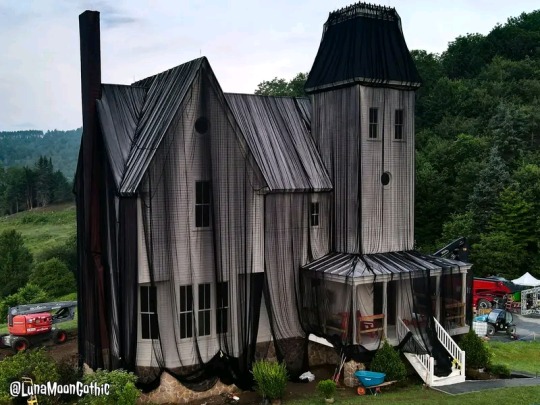
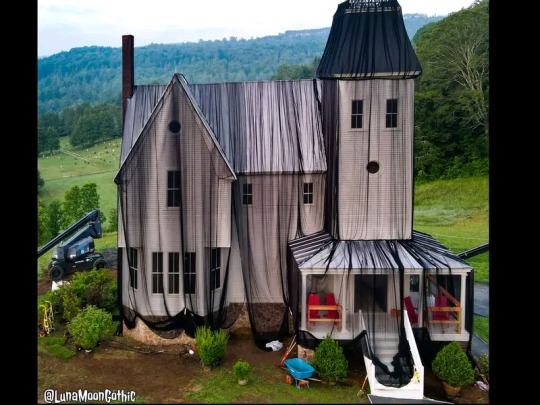
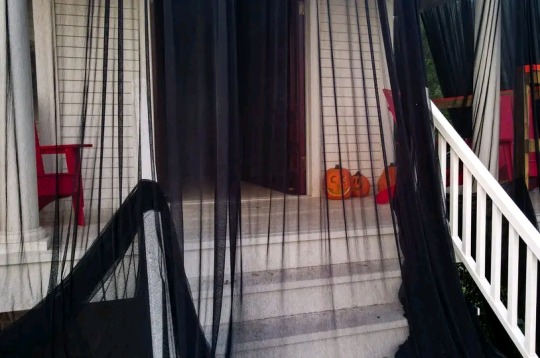
Various shots of the Maitland/Deetz home. I have no idea ifd the veil will be there for filming.
#beetlejuice#maitland house#deetz home#deetz house#maitland home#beetlejuice 2#east corinth vermont#beetlejuice beetlejuice
9 notes
·
View notes
Note
Which are the most beautiful places in Greece? Aside from mykono and santorini which are beautiful but they are the obvious answer 😉
First, let me tell you what isn’t. Mykonos is generally not among the most beautiful places in Greece. It might come off as a surprise to foreign people but you don’t go to Mykonos because of its beauty. You go for the jet set / celebrity vibes. That’s not to say it isn’t beautiful or that you wouldn’t love it if you went there - it has gorgeous settlements and nice beaches - but compared to other places I wouldn’t even rank it in the top 25, let alone top 2.
Santorini is another case. It’s one of a kind, not only in Greece but worldwide too. But even that can’t guarantee one will definitely like it. For example, my dad can name almost 10 islands he likes more than Santorini, which seems insane to me, but beauty is a very subjective matter.
Which is why I have trouble coming up with an answer for you. There are so many things that make a place beautiful. How can I objectively compare coastal and mountainous regions or beautiful towns or other peculiar attractions (outstanding landscapes or major historical/ cultural regions)? It depends on what everybody prefers. As I’ve said before, Greece’s strong card is that it is more or less everywhere beautiful. You have to make a really odd touristic choice to land on a truly plain place.
The only thing I can do is find the best regarding specific types of beauty. The rankings are in no particular order.
Best beaches and coastal regions:
Mostly found in the Heptanese (Ionian) islands and the Epirote coast opposite them [1], Chalcidice [2], Mount Pelion, the Sporades islands and Euboea island [3], Crete island [4], the Dodecanese islands [5], the South Peloponnese [6], Samos island [7], Thasos island [8] and some of the Cyclades islands (i.e the Small Cyclades) [9].
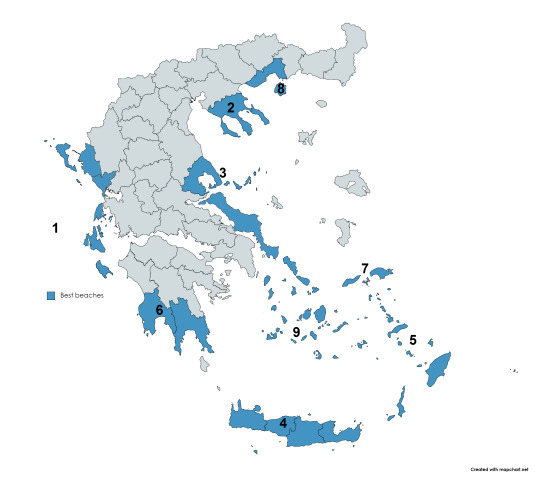
Best mountainous regions:
The Pindus mountain range and Agrafa mountains covering almost all of Epirus, Southwest Macedonia, West Thessaly, Northwest Sterea Hellas [1]. The rest of the mountains of Sterea Hellas [2]. The two mountain ranges of Crete island [3]. The mountainous core of Arcadia in Peloponnese, Feneos in Corinth and Mount Taygetus in Laconia [4]. Mount Olympus where Larissa meets Pieria [5]. Mount Voras in Pella [6] and Mount Falakro in Drama [7]. Mount Pelion in Magnesia [8].

Best forests, wetlands and ecoregions:
The forests in Thrace and East Macedonia [1], Kerkini in Serres, Skra lake in Kilkis and the waterfalls of Edessa [2], the Perspa lakes and the wildlife shelters in Kastoria and Florina [3], the National Woodland parks in Ioannina and Grevena [4], the Marine Park in Alonissos island and the forests in Mount Pelion [5], Plastira Lake in Karditsa [6], the many wetlands of Aetolia-Acarnania [7], the Marine Park of Zakynthos island [8], wetlands and forests in Elis [9], Feneos in Corinthia [10], Gorge of Samaria in Chania [11].

Prettiest towns or most interesting urban centers:
Kavala, Xanthi and the Pomak villages of Thrace [1], Thessaloniki [2], Kastoria, Ioannina, its surrounding Zagorohoria villages and Parga in Preveza [3], Kerkyra (Corfu) island [4], Volos and the traditional villages of Mount Pelion [5], Athens [6], Nafplion, the Saronic islands and the mountain villages of Arcadia [7], Lesvos and Chios islands [8], all the Cyclades islands and Skyros island [9], the Dodecanese islands [10] and Chania town [11].

Best historical sites:
Ancient Pella, Vergina in Imathia, Amphipolis in Serres and all monuments and museums in Thessaloniki [1], the Monastic State of Mount Athos [2], Kerkyra (Corfu) island [3], Delphi and all historical sites in Athens [4], basically all of Peloponnese [5], many of the Cyclades islands and the largest of the Dodecanese islands [6] and all archaeological and historical sites in most of Crete [7].
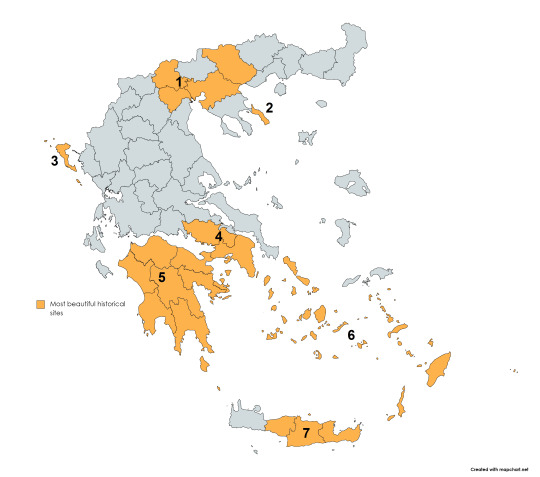
Best unique regions, standalone areas, natural and cultural wonders etc:
Meteora in Trikala is a category on its own [1], Santorini but also other places in Cyclades islands too (i.e Milos) [2], Samothrace [3], Livaditis of Xanthi, the tallest waterfall in the Balkans, in a challenging to access region [4], the autonomous Monastic State of Mount Athos [5], the sand dunes in Lemnos island and the petrified forest in Lesvos island [6], Vikos Gorge in Ioannina [7], Melissani lake in Cephalonia island and the Blue Caves in Zakynthos island [8], Polylimnio in Messenia and Diros caves in Laconia [9], several features in Chania (i.e Balos lagoon, Elafonissi pink beach, Samaria gorge) [10], the Corinth Canal in Corinthia [11] and the Servia gorge and Bouharia in Kozani [12].

Important note: This was an attempt to narrow it down. I excluded dozens of locations with beautiful archaeological museums, ancient theatres, tombs etc. I excluded many areas with pretty mountain villages. I excluded half the good beaches. I have certainly forgotten stuff. For example, I haven't coloured even once a place I really like. But in general I think the result is decent. Not perfect but not that far off either.
194 notes
·
View notes